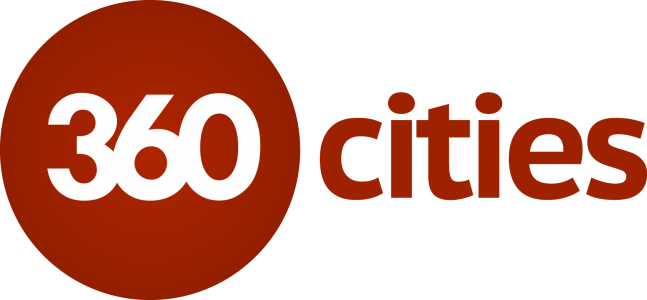This article is the second in a series of articles first posted on 360 Cities site in 2008 by David Martin, Jeffrey Martin and the 360 Cities team. The first article was about what the spherical panorama is and how it can be used. Today let’s show you how to create one! The information is still interesting and relevant even after 2 years so I’ve left most of the text the same. I updated only some parts (marked in italics) where the information was not accurate anymore. -Jan
To create a high quality spherical panoramic image, you need some special photographic equipment and some special software. Typical photographic equipment includes a digital SLR, a fisheye lens such as the Sigma 8mm F3.5 EX DG or the Samyang 8mm f3.5, a tripod, and a panoramic tripod head. Because no lens can capture the entire image sphere in one shot, one needs to cover the sphere with several shots. The special tripod head is optional but it helps to rotate the camera without changing the viewpoint. If the lens nodal point moves between shots, then parallax will make the next step of stitching the photos together very hard. With a fisheye lens, one covers the sphere with 2-6 shots, depending on the equipment, circumstances, and desired quality.
Stitching the images together
The next step is to combine the individual images into a spherical panoramic image in equirectangular format. The process of doing this is far beyond the scope of this article. There is a good free and open source tool called Hugin that many photographers use for this purpose. There are also commercial programs available like PtGUI or Autopano. The process is currently semi-automatic, becoming more automatic as time goes on. (Update: The situation is now much better than it was in 2008. If you know how to take the images properly the stitching process is a very straightforward these days. When you want to erase your shadow or tripod from the image it can still be a bit of work, though.)
Publishing the panorama to 360 Cities
Once you have created a panoramic image in the 2:1 aspect equirectangular format, it is a simple matter to publish it on the 360 Cities platform, which will make the image available not only on the web but on Google Earth as well (if the image is approved for Google Earth). Once you have joined 360 cities, you can immediately upload your image. We recommend a minimum resolution of 5000×2500 6000×3000 pixels. You can upload any size, but the practical maximum resolution is currently 16384×8192 65536 x 32768 pixels. The image will then appear in your pending images list while our system processes it (see below). When processing is complete, the image will move to your unpublished images list. Before publishing your image, you should edit the image metadata to set at least the title, description, geo location, and heading. Within a few minutes, your uploaded equirect will be available for viewing on the web and in Google Earth. During those couple minutes, our system converts the image into a variety of formats that enable efficient viewing at full resolution on various platforms.
Viewing the panorama
Once uploaded and converted, you may view the image both on the web and in Google Earth. Note that the very nice fullscreen mode. Click and drag on the image to pan; press the shift and control keys to zoom in and out.
http://www.360cities.net/javascripts/krpano/krpano.swf
The birth of Benjamin Martin in Czech Republic
http://www.360cities.net/javascripts/krpano/krpano.swf
Old Town Square Christmas Market in Prague
You can view an image as an PhotoOverlay on Google Earth (birth and market). You may have to double click on the downloaded KML file in order to launch it in Google Earth.) The Google Earth panoramic image viewer is not as slick as krpano, but it does the job. Click and drag to pan the image; there is also a pan and zoom control in the top right corner. If you exit the photo, the overlay is rendered as a floating sphere! Double-click on the sphere to fly into it.
In either format, as you pan around or zoom in and out, you’ll see tiles loaded as needed, just as happens in Google Maps. Krpano and Google Earth load only the tiles from the multiresolution pyramid that are needed to render the current view. The tiled pyramids provide a representation that makes these resolution-independent viewers possible.
Getting Started
Getting Started With Panoramic Photography Guide
Useful links
PanoTools Wiki – information hub for panoramic photography
PanoTools – Panorama Tools
PTgui – GUI for Panorama Tools
hugin – panorama photo stitcher
autopano – automatic panorama stitching
enblend/enfuse – image blending and HDR fusion tools
Panorama Tutorials – more links

Hello, I read the above post with much curiosity. However each time I read anything here, I wonder if you would make a blog on cheap ways to get ones hands on a fish-eye lens?
LikeLike